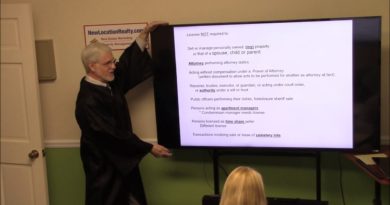What Does ‘Disclosure” Mean in a Claim
Understanding the term ‘disclosure’ is crucial in any legal dispute. Disclosure is crucial in determining the type of evidence that will be used to support your case. If you are in the middle of a legal dispute, Helix Law can provide expert advice and support. Our team of litigation solicitors will help you decide the best course of action to take in your particular situation.
What Is Disclosure?
Disclosure is a fundamental process in litigation. Each party must give the other side access to all documents relevant to the case. The Court takes the duty of disclosure seriously and it is outlined in the Civil Procedure Rules (CPR), 31 and (in cases of higher value claims) Practice Direction 57AD w
. The underlying principle is the fact that justice cannot be achieved unless all parties are given access to the full set of evidence. This will prevent any surprises at trial and ensure that the case is decided based on its merits. Disclosure in the High Court
The process of disclosure is extensive in multi-track cases that involve more complex and high-value claims. Parties are required to submit a list of documents they plan to use during the trial. This is known as Initial Disclosure.
The Parties will then be required to cooperate with one another to agree to the issues within the case in which disclosure is required. These issues are then outlined in a Disclosure Review document. The Disclosure Review Document will also include the models of disclosure required, the custodians, data sources, keywords, and date ranges for which relevant documents are to be searched.
The court will then approve the Disclosure Review document and order the most suitable disclosure Model for each issue. The decision will be driven by the “overriding goal” of handling cases justly and proportionately, aiming at restricting disclosure strictly to that which is necessary for a fair settlement of the case. It includes documents that are relevant to the case, as well as those that could be used against them or that would support their opponent’s position.
Disclosure in Multi-Track Cases?
Standard disclosure is the most common form of disclosure in multi-track cases It requires Parties to disclose:
All documents that a party uses to support their arguments or claims in the case.
Documents that –
– could potentially undermine the position of the party providing them. Disclosing these documents ensures transparency and fairness, preventing any party from withholding evidence that could influence the outcome unfavourably.
- – adversely affect another party’s case;
- – support another party’s case;
The parties must conduct a reasonable search for these documents, considering factors such as the number of documents, the nature and complexity of the case, and the ease and expense of retrieval.
Which Documents Do Parties Have To Disclose in Litigation?
During litigation, parties must disclose documents that are relevant to the issues in dispute. The term “document” can be used to describe any medium that records information, from traditional paper formats, to modern digital media, such as emails, tapes and computer records. It also includes metadata associated with digital files. The amount of documentation required to be disclosed can be considerable. To ensure fairness, the CPR requires a comprehensive disclosure approach. Parties should discuss and agree on the scope and timing of the disclosure process at least seven working days before the first Costs and Case Management Conference. In complex cases, this can be done earlier.
Parties cannot withhold documents necessary for disclosure merely because they are confidential unless justified by a specific right or duty.
However, according to court rules, documents obtained through disclosure are generally restricted to use within the ongoing litigation. Using these documents outside the scope of the case is prohibited unless explicitly authorised by the court, such as through a specific permission granted under particular circumstances.
Which Documents Are Privileged in Disclosure?
Certain documents are protected from disclosure under the principle of privilege, which includes:
All confidential communications between a client and their legal advisors, where the purpose of the communication is to seek or receive legal advice. This includes advice for both non-contentious matters (like transactional advice) and contentious matters (related to disputes).
Communications between a client and legal advisors once litigation is reasonably anticipated or has already commenced.
Communications between a lawyer and third parties if the main purpose of these communications is directly associated with the ongoing or anticipated litigation. The scope of litigation privilige for communications between non lawyers is more limited. Such privilege applies when these communications are expressly for obtaining professional legal input related to the litigation.
Communications explicitly made in a genuine attempt to settle a dispute out of court cannot be used as evidence in court without both parties’ consent. This facilitates open and honest negotiation between parties by protecting offers and admissions made during these discussions.
- What Is a Disclosure Report, and What Must It Include?
- A disclosure report is essential in multi-track litigation under the Civil Procedure Rules in the UK. It must be filed with the CMC and served within 14 days of the first CMC. The report should include: :
- A concise description of relevant documents, the types and locations of the documents, and identifying whether they are in possession of the party or others.
- Outline how electronic documents are stored, including the formats and the systems used for their storage.
The report should estimate the costs involved in the disclosure process, including the costs associated with locating, retrieving, and reviewing both physical and electronic documents. The type of disclosure order that the party is requesting. This could range from standard disclosure to more specific orders tailored to the case’s needs, taking into account the relevance, importance, and volume of documents involved.
Frequently Asked Questions
- What Is the Purpose of the Disclosure?
- Disclosure ensures that all parties have access to the material facts and evidence needed to argue their case effectively. It is designed to prevent surprises and ensure that cases are decided based on a comprehensive view of the relevant information, promoting a fair and just legal process.
- What are the Consequences of Failing to Comply with Disclosure Obligations?
- Non-compliance with disclosure obligations can lead to serious consequences, including:
Adverse inferences being drawn by the court.
Costs penalties.
Striking out of claims or defences.
Contempt of court proceedings in extreme cases
How can Technology Assist in the Disclosure Process
- Technology can significantly aid the disclosure process through the use of E-Disclosure Platforms (to harvest, search and review large volumes of electronic documents) and Technology Assisted Review (otherwise known as Continuous Active Learning) which uses AI to identify relevant documents reducing the time and costs involved in manual review. Need Advice? Contact Helix Law.
- Conclusion
- Understanding disclosure is essential for effectively navigating the complexities of litigation. Disclosure is becoming a more important tool and process for litigation. We can use it to our clients’ advantage and put their opponents under a lot of pressure. This article has examined the complexities of the disclosure process. It has covered what must be disclosed, types of privileged document, and how to prepare a disclosure report. Helix Law can help if you are facing litigation and require expert guidance to manage disclosure process efficiently. Our commercial litigation team is prepared to give you the support and advice you need to successfully navigate your case. Contact Helix Law to protect your legal rights and make the best decisions for your case.






